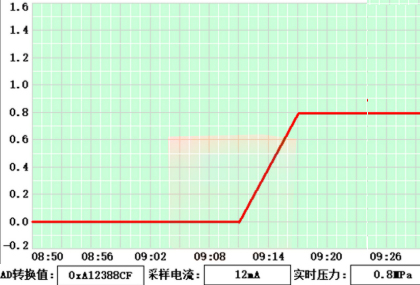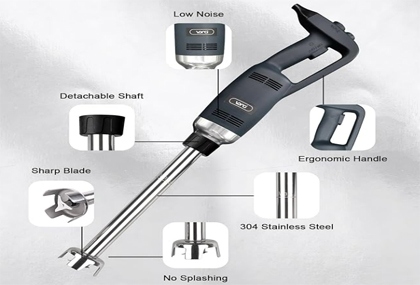Research on the Necessity of Water Hammer Testing in the Production of Mixers
May 19,2025
251
In modern industrial production, the mixer, as the core equipment for processes such as fluid mixing, chemical reactions, and material transportation, its safety and reliability directly affect production efficiency and operational stability. The water hammer effect, a transient pressure fluctuation phenomenon in fluid systems caused by sudden changes in flow velocity, may have a destructive impact on the mixer and its pipeline system. This paper deeply explores the necessity of water hammer testing in mixer production from dimensions such as the generation mechanism of the water hammer effect, the characteristics of mixer operating conditions, and industry standard requirements, providing a theoretical basis for equipment design and quality control.
I. Physical Essence and Hazard Mechanism of the Water Hammer Effect
The generation of the water hammer effect (Water Hammer) stems from the instantaneous change in fluid momentum. When the mixer starts or stops, the blade speed suddenly changes, or the pipeline valve is quickly opened or closed, the rapid change in fluid velocity will lead to a violent conversion between kinetic energy and pressure energy, forming a high - frequency pressure pulse wave. According to fluid mechanics theory, the peak water hammer pressure can be calculated by the formula ΔP = ρ⋅c⋅Δv (where ρ is the fluid density, c is the pressure wave propagation speed, and Δv is the change in flow velocity). In high - viscosity fluids or large - diameter pipe systems, the peak pressure can reach 3 - 5 times the normal working pressure.

This transient pressure fluctuation can cause multiple hazards to the mixer system:
Mechanical Structure Damage: The pressure pulse acts on components such as impellers, bearings, and seals, which may cause fatigue cracks, bolt loosening, or seal failure, especially in precision components made of ductile materials such as stainless steel and aluminum alloy.
-Pipeline System Vibration: When the pressure wave propagates along the pipeline, it will excite the natural frequency of the pipeline, resulting in bracket fracture, flange leakage, or even pipeline bursting. A certain chemical enterprise once experienced a water hammer caused by the shutdown of a mixer, which led to the cracking of the weld of a DN200 pipeline, resulting in a toxic medium leakage accident.
Control System Interference: The sudden pressure change may cause signal distortion of instruments such as flow sensors and pressure transmitters, leading to misjudgment of the PLC control system and affecting the automation accuracy of the production process.
II. Mixer Operating Condition Characteristics and Water Hammer Risk Scenarios
The working characteristics of the mixer determine that there are significant water hammer risks in the following scenarios:
(I) Start - up and Shutdown Processes
When the mixer motor speeds up from 0 to the rated speed (such as 1500rpm), the shearing action of the impeller on the fluid causes the flow velocity to rise rapidly within 0.5 - 2 seconds. At this time, the check valve or filter at the pipeline inlet may generate a reverse pressure fluctuation due to fluid inertia. Conversely, during shutdown, the inertial rotation of the impeller causes the fluid to flow lag, creating a negative pressure cavity at the pump outlet, triggering a water column separation - re - closing type of water hammer. This phenomenon is particularly serious in high - head and long - pipeline systems.
(II) Variable - condition Operation
In industries such as food, medicine, and chemicals, the mixer often needs to adjust the speed (such as from 300rpm to 1000rpm by frequency conversion) or switch the mixing mode (such as from low - speed mixing to high - speed dispersion) according to process requirements. At this time, the fluid flow pattern transitions from laminar flow to turbulent flow, and the vortex shedding caused by boundary - layer separation interacts with the pressure wave, forming complex coupled vibrations. The emulsifying mixer in a certain dairy factory once experienced a 60% reduction in the mechanical seal life due to the water hammer effect during frequency - conversion speed regulation.
(III) Multi - equipment Linkage Scenarios
When the mixer is in series operation with equipment such as centrifugal pumps, flow meters, and safety valves, the opening and closing operations of downstream equipment may cause pressure oscillations inside the upstream mixer. For example, when the centrifugal pump is suddenly closed, the kinetic energy of the fluid in its outlet pipeline is converted into pressure energy, which impacts the mixer impeller in the reverse direction, forming a "back - flow water hammer". This cross - equipment transient load poses a severe test to the integrity of the system.
III. Implementation Path of Water Hammer Testing in Mixer Production
To quantitatively evaluate the water hammer risk, the mixer production needs to establish a three - level testing system including design simulation, prototype testing, and operating condition verification:
(I) CFD Simulation Pre - evaluation
Use computational fluid dynamics (CFD) software (such as ANSYS Fluent, CFX) to establish a mixer flow channel model, and simulate the flow velocity, pressure distribution, and transient changes under different operating conditions. By setting the speed curves (exponential rise / fall, step - change, etc.) during the start - up and shutdown processes, the propagation path and peak distribution of the pressure wave can be visually observed. A certain construction machinery enterprise found through simulation that when the mixer blade adopts a backward - curved design, the water hammer pressure during the shutdown stage can be reduced by 28%, and accordingly optimized the impeller structure design.
(II) Physical Prototype Testing Platform
Build a testing platform including the mixer body, simulated pipeline, and sensor array. The core equipment includes:
- Dynamic pressure sensors (accuracy ±0.25% FS, response frequency ≥ 10kHz) to capture μs - level pressure fluctuations.
- Vibration acceleration sensors (sensitivity 100mV/g) to monitor the vibration amplitude of key parts such as bearing housings and flanges.
- High - speed cameras (frame rate ≥ 500fps) to record visual phenomena such as seal leakage and bubble generation. The testing process follows ISO 2858 (centrifugal pump testing standard) and GB/T 9069 (Measurement and evaluation methods for vibration of centrifugal, mixed - flow, axial - flow, and vortex pumps for industrial use), focusing on collecting pressure - time curves, vibration spectrograms, and leakage data during the start - up / shutdown processes.
(III) Industry Standard Compliance Verification
In special fields such as petrochemical and pharmaceutical industries, the mixer needs to meet strict safety regulations:
- API 610 (Centrifugal pumps for petroleum, heavy chemical, and natural gas industries) requires that the equipment stress under water hammer conditions should be ≤ 80% of the allowable stress of the material.
- ASME B31.3 (Process Piping Code) stipulates that the water hammer pressure should be included in the pipeline stress analysis, and the safety factor should be ≥ 1.5.
- FDA 21 CFR Part 11 (Pharmaceutical equipment regulations) clarifies that the mixer components in contact with drugs should not produce metal particle shedding or coating damage after water hammer impact.
IV. Economic Benefits and Quality Improvement Value of Water Hammer Testing
According to the empirical data of a certain mixer manufacturer, implementing water hammer testing can bring significant benefits:
Reliability Improvement: The mean time between failures (MTBF) of the mixer optimized through testing has increased from 4500 hours to 7200 hours, and the after - sales maintenance cost has decreased by 40%.
Compliance Assurance: The mixer certified by API 610 can increase its selling price by 25% in the overseas market, and the order conversion rate has increased by 35%.
Process Optimization: A certain lithium - battery slurry mixer found through water hammer testing that the pressure fluctuation during low - speed mixing would cause electrode material delamination. By adding guide vanes, the product consistency qualification rate has increased from 82% to 96%.
Building a Lifecycle Water Hammer Protection System
Water hammer testing in mixer production is not only a technical means to deal with instantaneous pressure impacts but also a systematic quality control link throughout the design, manufacturing, and application. With the increasing requirements of Industry 4.0 for equipment intelligence and reliability, water hammer testing should be deeply integrated with vibration analysis, fatigue life prediction, and digital twin technology to form a closed - loop management system from risk identification to fault prevention. For manufacturers, incorporating water hammer testing into production standards is not only a necessary condition to meet high - end market access but also the core competitiveness to build technical barriers and enhance brand value. In the trend of the high - speed and precision development of fluid machinery, only by establishing a scientific testing and evaluation system can the mixer achieve "safe start - up and shutdown, stable operation, and long - life service" under complex operating conditions, laying a solid foundation for the safety of modern industrial production equipment.





